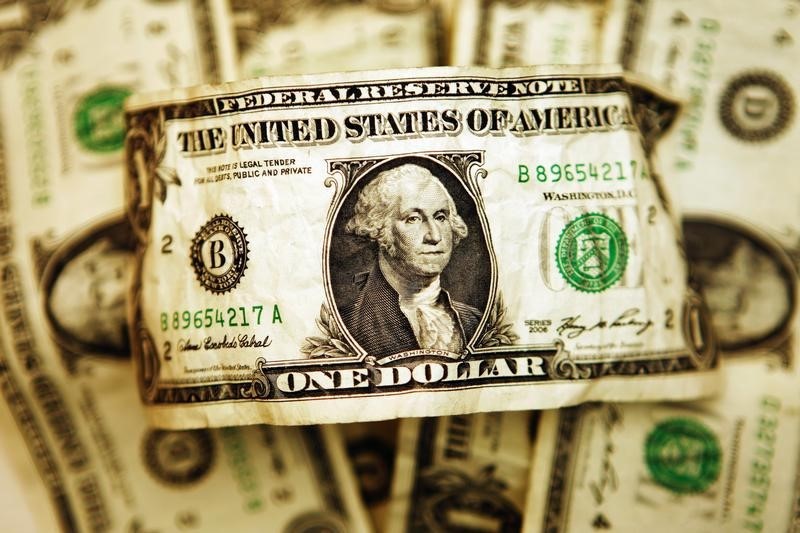Investing.com – The dollar was hit by a fresh wave of selling Thursday, losing ground against its rivals following negative U.S. data showing a slowdown in the U.S. housing and labor market.
The U.S. dollar index, which measures the greenback’s strength against a trade-weighted basket of six major currencies, fell by 0.23% to 93.69, after hitting a high of 93.91.
The dollar come under pressure after sales of previously owned homes in the US unexpectedly fell in April, as tight supply continued to weigh on housing activity.
The Commerce Department showed existing home sales fell 2.5% in April from the previous month to a seasonally adjusted annual rate of 5.46 million homes. Economists were expecting a 0.2% decline to 5.56 million homes.
The U.S. Department of Labor reported Thursday that initial jobless claims rose by 11,000 to a seasonally adjusted 234,000 for the week ended May 19, missing economists’ forecast for a drop to 220,000.
That was the second straight rise in jobless claims but analysts said it did not signal a downtrend in the labor market.
"[Jobless claims were] higher than expected, but it will take more than one or two higher readings to signal an uptrend," HFE analysts said in a note to clients.
The greenback had started the session under pressure following the release of dovish Federal Reserve minutes on Wednesday, in which policymakers said they were comfortable with inflation overshooting the central bank’s 2% target, denting investor hopes of more aggressive monetary policy tightening.
Also weighing on the dollar was a rebound in the euro and pound.
EUR/USD rose 0.27% to $1.1727, but ongoing Italian political uncertainty kept a lid on upside momentum.
GBP/USD rose 0.25% to $1.3382 as traders cheered better-than-expected retail sales data.
USD/JPY fell 0.73% as U.S. President Trump called off next month’s meeting with North Korean counterpart Kim Jong Un following a series of threats from Pyongyang.
USD/CAD rose 0.44% to C$1.2892 as falling oil prices continued to support the pair amid reports OPEC and its allies could discuss scaling back production cuts at its upcoming meeting in June.
